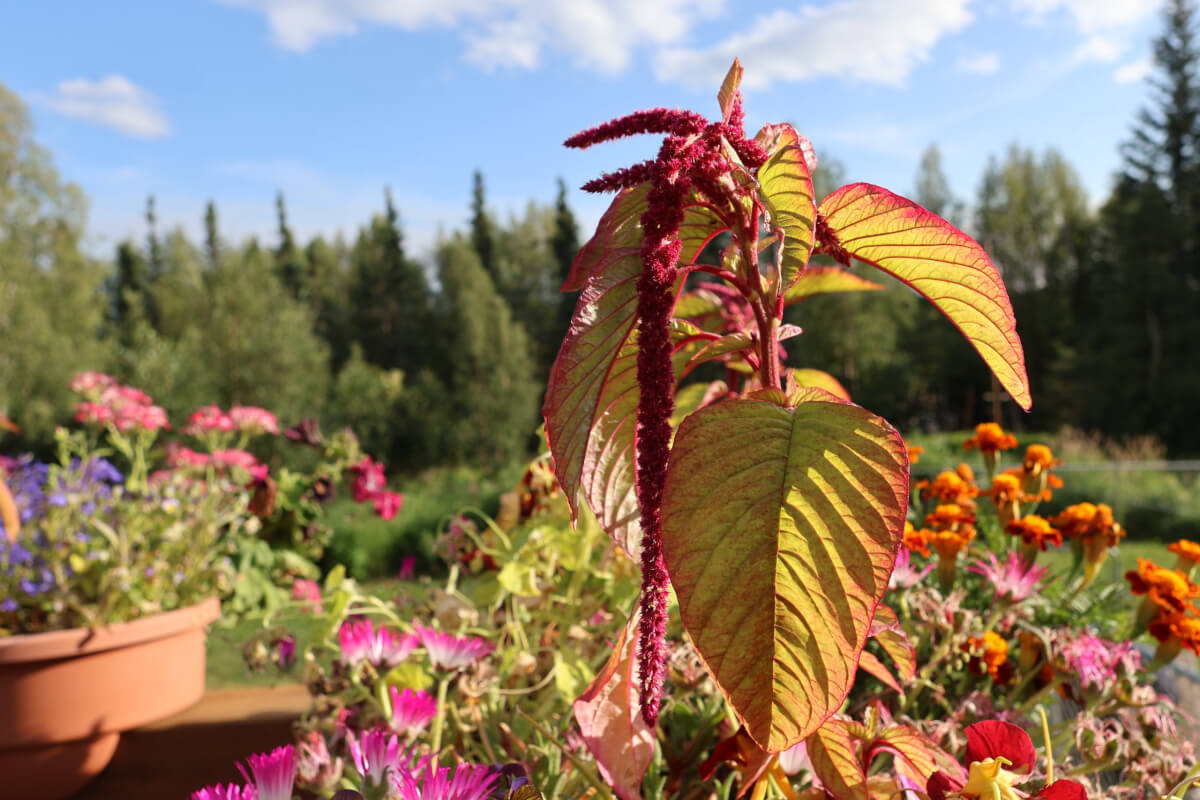We are running out of Friday’s left in the growing season! It’s hard for us to say how many are left this year, but it’s anywhere from one to a few remaining! For today’s Flower Friday, we’re bringing you something a little different.
This is Amaranthus caudatus. You might know it by its more modern and commonly used name, Love Lies Bleeding. As you might gather from the Latin name, this flower is technically a member of the Amaranth family. This plant is of major importance in South America, where you might instead hear it called Kiwicha.
You might be asking, “But Frosty Garden, where are the flowers?” Well, those striking, long growths are called flowering panicles. Those panicles are self pollinating, like many amaranth. If you’ve ever had quinoa, you’ve eaten the self pollinated fruit of an amaranth plant!
We’re back into the edible flowers again. Love Lies Bleeding was integrally used as a staple grain by the Incan, Mayan and Aztec civilizations. It was commonly eaten by royalty and also used in religious rituals. It was even used during human sacrifice ceremonies, where it was mixed with honey and blood. The result which were (ahem), presumably eaten by the participants.
In fact, its culinary uses met a premature end sometime in the 1500’s. During the period of the conquistadores, Spanish and Portuguese armies banned its use for its ties to those sacrificial ceremonies. It was again rejuvenated as a cultivated crop in the 1800’s and is seeing slow revival, but those 300 years took their toll. Due to its controversial uses, this plant never really made it far out of the Americas for more wide spread cultivation.
This flower’s difficult past is unfortunate, as the flower’s seeds (grains) are flavorful, gluten free and are also high in protein and amino acids. The seeds can be made into flour, breading, cereal grains and even popped like popcorn on a pan! It is seeing more wide spread commercial use for its health advantages, especially in the gluten free circles. You’ll often see it referenced by its South American name in this case, Kiwicha.
If you’re looking for dye flowers, this one should be on your list. The rich red color comes from betalain, which produces a non-toxic and food-safe red dye, depending on the extraction technique.
This is definitely one of our favorite flowers that we grow, it’s a must have every year. We always wonder how our world might be different if this plant’s difficult past hadn’t gotten in the way of its horticultural uses. Would we use it instead of wheat flour? Would we have fields of it growing nationwide? Hard to say, but a fun mental exercise to think about.


